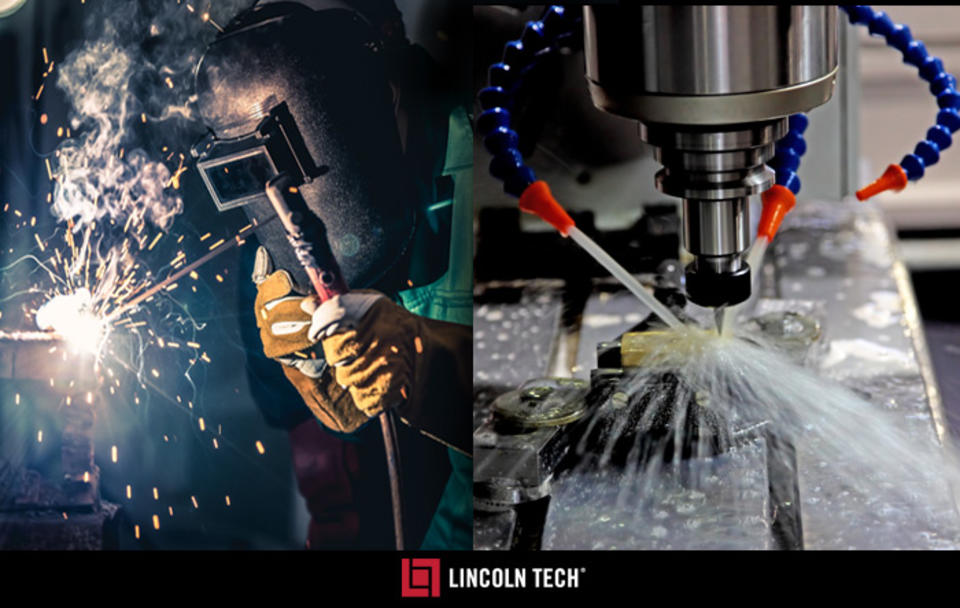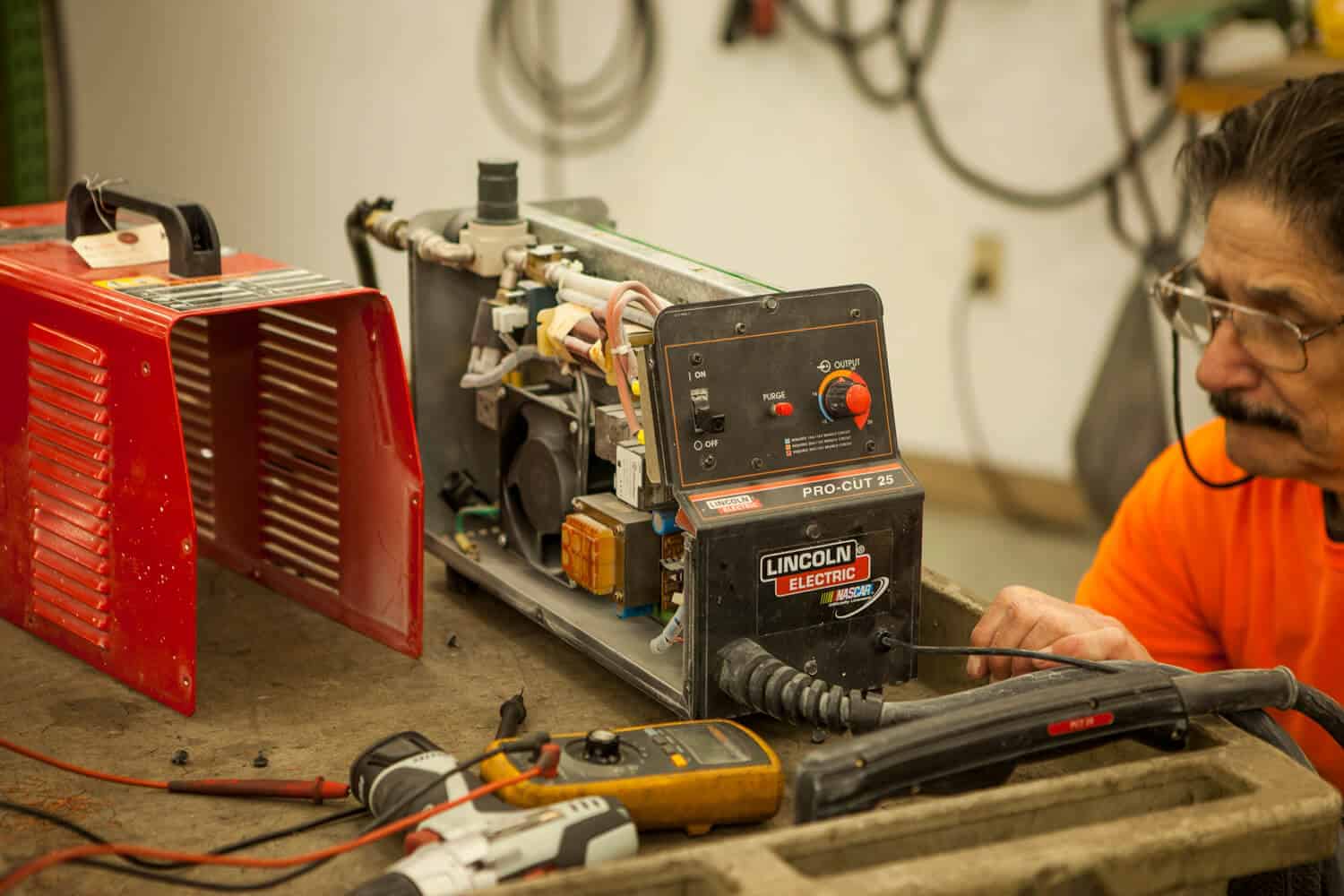Typical Welding Repair Service Issues and Just How to Address Them Effectively
Welding repair work typically come across a series of problems that can jeopardize the integrity of the last product. Typical troubles include inadequate penetration, porosity, and misalignment, to name a few. Each defect offers unique difficulties that call for specific approaches for resolution. Recognizing these problems is essential for welders aiming to improve their end results and abilities. This conversation will certainly explore these typical welding repair work issues and efficient methods to resolve them.
Poor Infiltration
Inadequate infiltration takes place when the weld metal fails to fully fuse with the base product, causing weak joints and potential structural failings. This issue often comes from inadequate warm input, inaccurate electrode angle, or incorrect welding speed. Welders might encounter poor penetration because of a mistake of the needed specifications for a certain material thickness or kind. Furthermore, contamination on the base product's surface can hinder efficient bonding, intensifying the trouble. To address insufficient infiltration, welders should guarantee ideal settings on their equipment and maintain a clean work surface area. Routine examination of welds is suggested to identify any kind of shortages early, enabling prompt modifications and the prevention of jeopardized architectural integrity in welded assemblies.
Porosity
Porosity is a typical problem in bonded joints that materializes as little gas bubbles trapped within the weld steel. This defect can compromise the honesty of the weld, causing reduced toughness and possible failing under stress. Montana Mobile Welding and Repair Fabrication. Porosity typically emerges from contamination, moisture, or incorrect welding techniques, which enable gases to run away right into the molten weld swimming pool. To resolve porosity, welders should assure appropriate surface preparation, preserve a tidy workplace, and utilize suitable welding specifications. Additionally, choosing the ideal filler product and securing gas can alleviate gas entrapment. Normal assessment and testing of welds can help determine porosity early, guaranteeing timely restorative activities are taken, thus preserving the quality and dependability of the bonded structure
Misalignment
Imbalance in welding can occur from various variables, including improper setup and thermal development. Recognizing the origin is crucial for effective resolution. Several modification techniques are available to straighten elements and guarantee architectural integrity.
Reasons of Imbalance
Welding misalignment usually stems from a selection of underlying problems that can jeopardize architectural honesty. One primary cause is inappropriate fit-up of parts before welding, which can cause voids and uneven surfaces. Variations in thermal expansion during the welding procedure can likewise lead to distortion, particularly if the products being signed up with have various coefficients of development. Furthermore, poor fixturing and clamping might fall short to hold elements safely in position, resulting in movement throughout welding. Inadequately maintained equipment, including welding machines and tools, may present inconsistencies in the weld grain, further contributing to imbalance. Driver mistake, stemming from insufficient training or experience, can likewise play a considerable duty in creating misaligned welds.

Improvement Techniques Readily Available
Resolving imbalance properly needs a combination of restorative techniques customized to the details concerns available. One usual approach is the usage of fixtures or jigs to hold parts in the appropriate setting during welding, making certain constant placement. Furthermore, pre-heating the products can help in reducing distortion and improve fit-up. For substantial misalignment, mechanical realignment techniques, such as making use of hydraulic jacks or clamps, can be utilized to correct the placement before welding. Post-weld warm treatment might additionally be required to relieve stresses triggered by imbalance. Mindful evaluation and modification during the setup phase can stop misalignment problems from ending up being significant troubles, advertising a smoother welding procedure and boosting total structural stability.
Distortion
Distortion is a common obstacle in welding that can occur from various aspects, consisting of uneven cooling and heating. Recognizing the reasons for distortion is vital for carrying out reliable prevention strategies. Addressing this concern not only enhances structural integrity however additionally improves the general top quality of the weld.
Sources of Distortion
When based on the intense warm of welding, products usually undergo modifications that can result in distortion. This sensation primarily occurs from thermal expansion and contraction throughout the welding procedure. As the weld area warms up, the material increases; upon cooling, it contracts, which can produce internal stresses. Furthermore, unequal home heating across a work surface can aggravate these stress and anxieties, causing bending or flexing. The kind of product additionally plays a considerable duty; steels with differing thermal conductivity and coefficients of growth may respond in different ways, bring about uncertain distortions. Inadequate joint style and poor fixturing can add to misalignment during welding, increasing the possibility of distortion. Recognizing these reasons is essential for reliable welding fixing and avoidance techniques.
Prevention Techniques
Efficient avoidance methods for distortion throughout welding concentrate on managing warm input and guaranteeing appropriate joint design. Preserving a regular heat input aids to decrease thermal expansion and tightening, which can bring about distortion. Utilizing strategies such as preheating the work surface can likewise minimize the temperature level gradient, advertising consistent home heating. Furthermore, choosing appropriate joint styles, such as T-joints or lap joints, can improve stability and lower stress focus. Applying proper fixturing to secure the workpieces in position better aids in maintaining positioning throughout the welding process. Staggered welding series can distribute heat a lot more uniformly, stopping local distortion. By applying these techniques, welders can substantially reduce the probability of distortion and improve the general quality of their welds.
Fracturing
Splitting is a typical problem encountered in welding repair work, often resulting from various variables such as improper cooling rates, product choice, or inadequate joint preparation. The occurrence of cracks can considerably compromise the stability of the weld, resulting in prospective failings throughout procedure. To address this concern, welders should initially assess the origin triggers, making sure that materials work and properly selected for the specific application. Furthermore, regulating the cooling price during the welding procedure is necessary; rapid cooling can induce stress and bring about cracking. Proper joint layout and preparation likewise contribute to lessening the threat. Executing these techniques can boost weld quality and toughness, ultimately reducing the chance of breaking in ended up weldments.

Incomplete Blend
A significant issue in welding repairs is incomplete blend, which occurs when the weld right here steel does not effectively bond with the base product or previous weld passes - Montana Mobile Welding and Repair Belgrade Fabrication. This defect can lead to weaknesses in the joint, potentially jeopardizing the honesty of the bonded framework. Factors adding to incomplete fusion include insufficient warm input, improper welding method, and contamination of the surface areas being joined. To resolve this concern efficiently, welders ought to guarantee correct pre-weld cleaning and surface area prep work, as well as adjust their welding specifications to accomplish adequate penetration and blend. Normal inspection during the welding process can also aid determine insufficient blend early, allowing for timely rehabilitative measures to improve the overall top quality of the weld
Overheating
While welding fixings can boost architectural integrity, overheating provides a significant challenge that can bring about material destruction. Too much heat during welding can change the mechanical residential or commercial properties of steels, resulting in minimized toughness, boosted brittleness, and bending. This sensation is specifically crucial in high-stress applications where structural integrity is extremely important. Identifying getting too hot can include visual assessments for staining or distortion, as well as keeping an eye on temperature during the welding process. To minimize the risks connected with getting too hot, welders ought to utilize appropriate methods, such as managing warm input, adjusting travel speed, and using appropriate filler products. Additionally, executing pre- and post-weld warm therapies can aid restore product residential properties and enhance the overall top quality of the fixing, ensuring lasting efficiency and security.
Frequently Asked Inquiries
What Are the Typical Indicators of a Welding Issue?

Just How Can I Test My Welds for Top quality?
To check welds for high quality, one can use visual assessments, ultrasonic testing, and radiographic approaches. Each method assures structural integrity, identifies problems, and verifies adherence to defined criteria, ultimately enhancing the integrity of the welded joints.
What Safety and security Safety Measures Should I Take While Welding?
When welding, ac dc welder one need to prioritize security by putting on suitable personal safety equipment, ensuring appropriate air flow, safeguarding flammable products away, preserving a clean work area, and recognizing surroundings to avoid mishaps and injuries.
Can I Repair a Weld Without Redoing the Entire Joint?
Repairing a weld without renovating the entire joint is feasible, depending upon the damages (Belgrade). Strategies such as grinding, adding filler product, or utilizing a welding process can efficiently deal with details flaws while preserving the bordering framework
What Tools Are Important for Reliable Welding Repairs?
Important devices for reliable welding repair services include a welding maker, wire brush, mill, protective gear, clamps, and filler materials. Each tool plays a crucial role in making sure high quality and security throughout the fixing process. Porosity usually emerges from contamination, moisture, or incorrect welding strategies, which allow gases to run away into the molten weld pool. Improperly kept tools, consisting of welding equipments and devices, may present inconsistencies in the mig wire weld bead, more adding to misalignment. When subjected to the extreme warmth of welding, products frequently undertake changes that can lead to distortion. Splitting is a typical issue come across in welding repairs, frequently resulting from different factors such as improper air conditioning prices, product selection, or inadequate joint prep work. A significant issue in welding repairs is incomplete fusion, which occurs when the weld steel does not appropriately bond with the base product or previous weld passes.